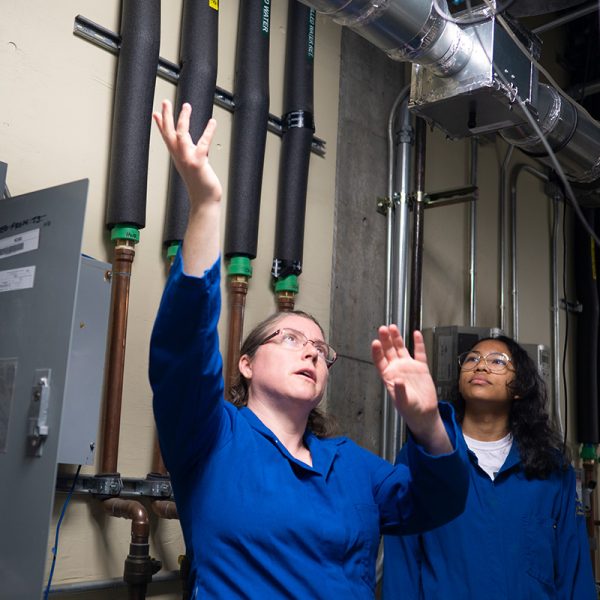
Our study showcases the underutilized strength of PI (Proportional-Integral) control in optimizing CO2-based ventilation. It's a straightforward approach with substantial performance gains.
Theresa Pistochini
Maintaining a healthy indoor environment involves more than just temperature control; it’s also about balancing energy efficiency and air quality. A recent study at the Western Cooling Efficiency Center at UC Davis delves into the efficacy of Demand Control Ventilation (DCV) systems, examining their ability to adjust ventilation rates in response to indoor carbon dioxide (CO2) levels, thus conserving energy while maintaining air quality.
Led by Theresa Pistochini and a team of researchers, the study developed an innovative test method to evaluate commercially available DCV controllers for packaged HVAC systems. The goal was to assess their performance in controlling indoor CO2 levels in response to occupancy patterns. They found that, while some controllers achieved decent performance, most struggled to maintain CO2 levels within the desired range.
“In our assessments, we observed varying degrees of control among these systems,” shared Pistochini. “It’s clear that improving the algorithms within these systems is crucial for better control indoor air quality.”
Surprisingly, a straightforward proportional-integral (PI) control algorithm implemented by the research team outperformed all the systems tested, achieving superior CO2 control more than 90% of the time. Additionally, the research demonstrated that the PI control will work well in a wide range of applications without building-specific tuning.
“Our study showcases the underutilized strength of PI control in optimizing CO2-based ventilation,” said Pistochini. “It’s a straightforward approach with substantial performance gains.”
The study highlights the importance of transparent performance data for DCV controllers and emphasizes the need for industry-wide improvements. With better control algorithms, these systems can effectively reduce airborne diseases, optimize energy use, and reduce damper actuator movement and failures.
The road to implementing these improvements might be slow, however, due to infrequent replacement of HVAC systems. Yet, possibilities exist for controller replacements or firmware updates, especially in cloud-based systems that allow remote updates.
This research serves as a foundational step, demonstrating a need for manufacturers to focus on refining control algorithms and advocating for standardized testing procedures. It’s a call for industry to prioritize healthier indoor environments through enhanced ventilation control.
In addition to the published paper, the performance data is available at https://energyproductevaluations.org/, which is a resource developed and led by UC Davis by for obtaining product-specific evaluations for energy-related products. The work was supported by the California Energy Commission (Agreement EPC-17-034) and Flu Lab (Agreement A22-2462).

